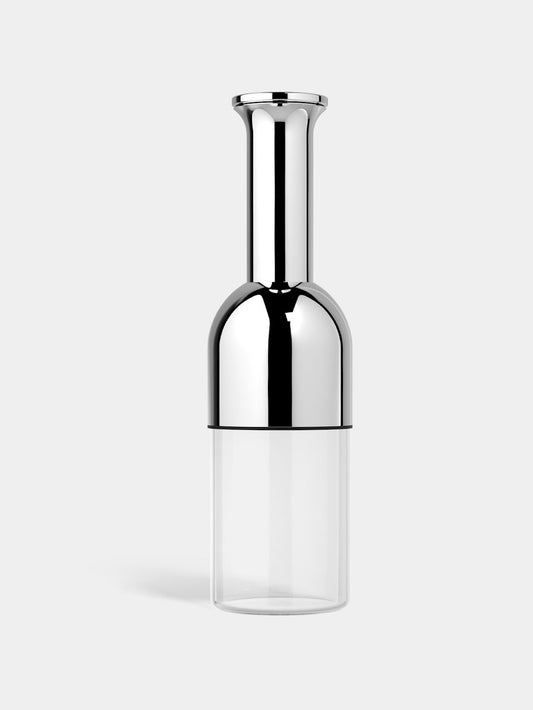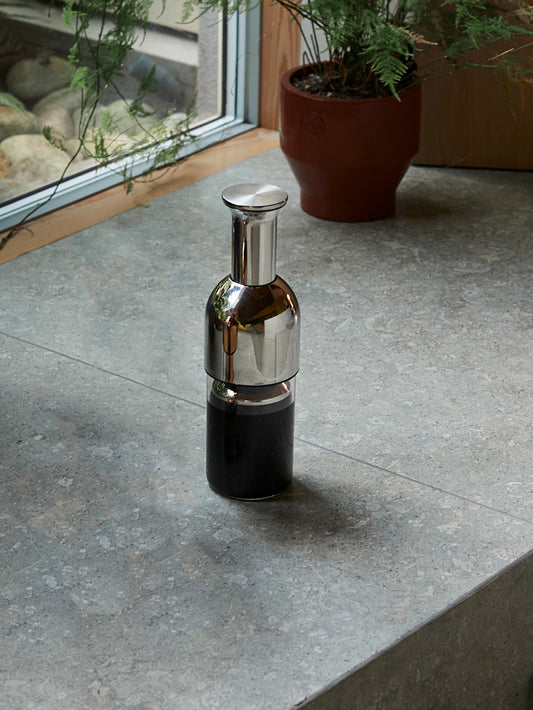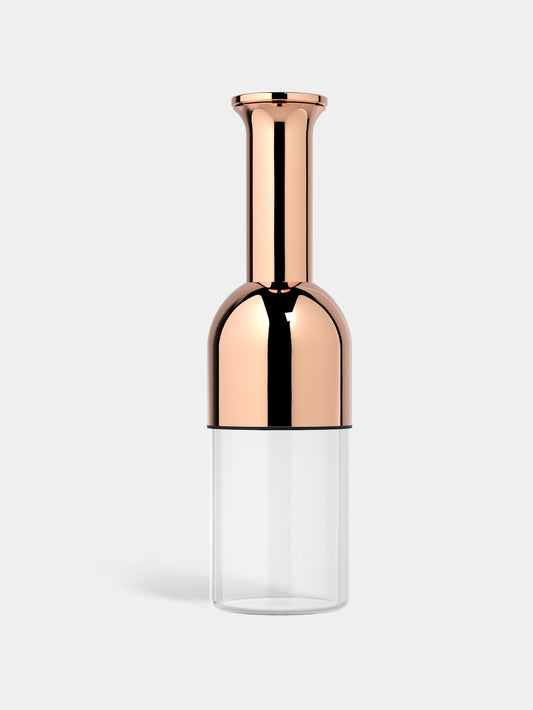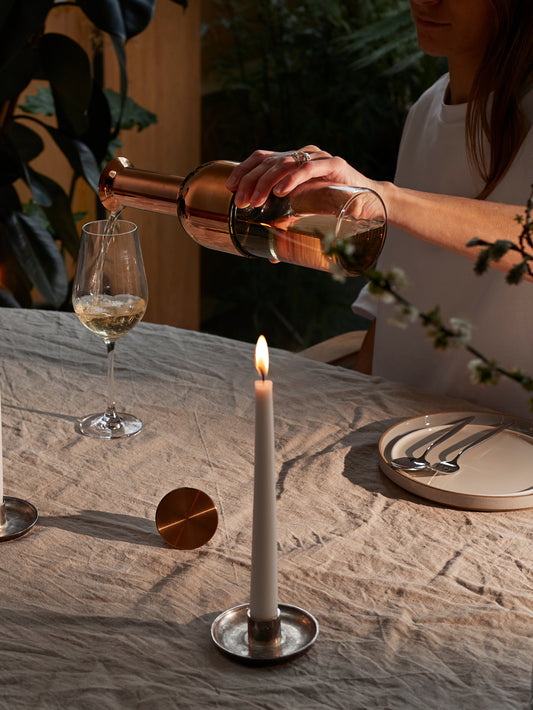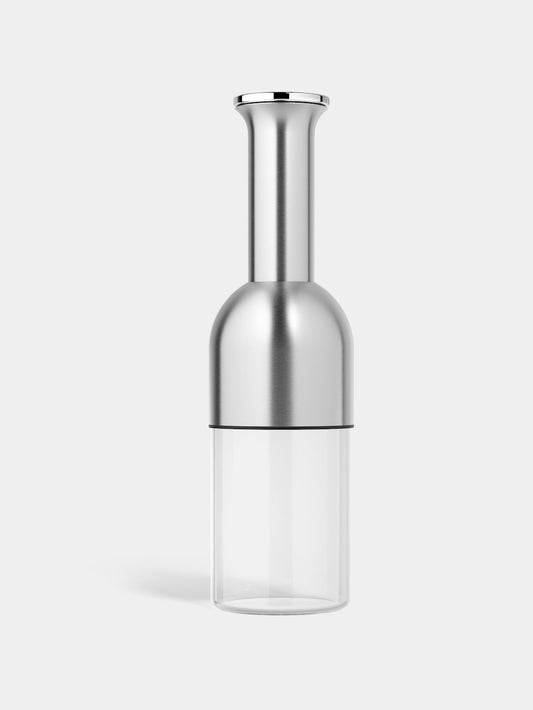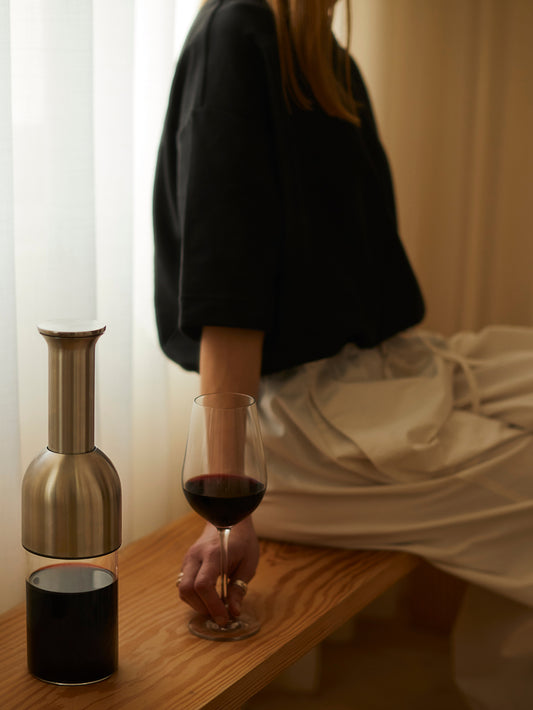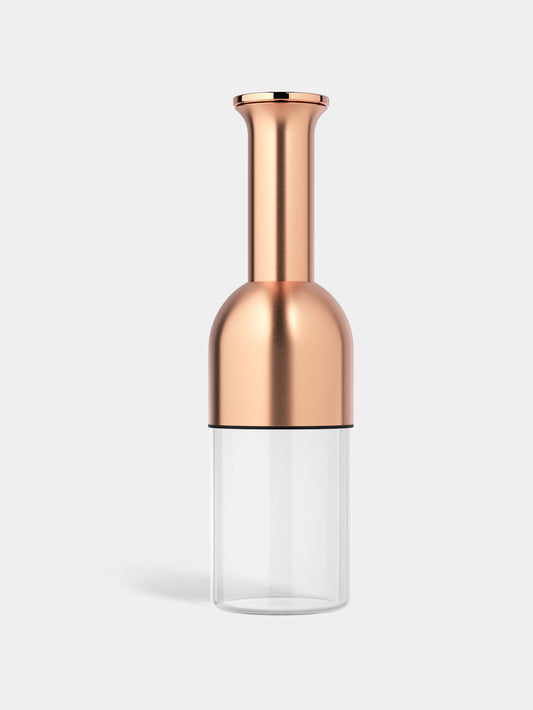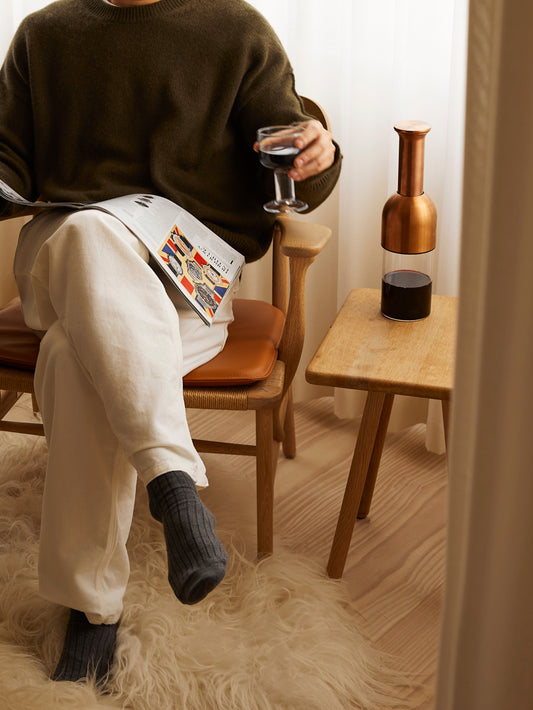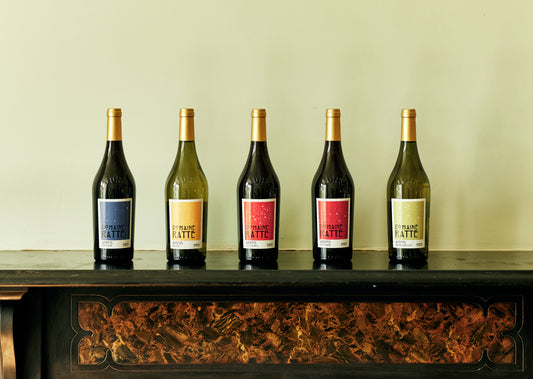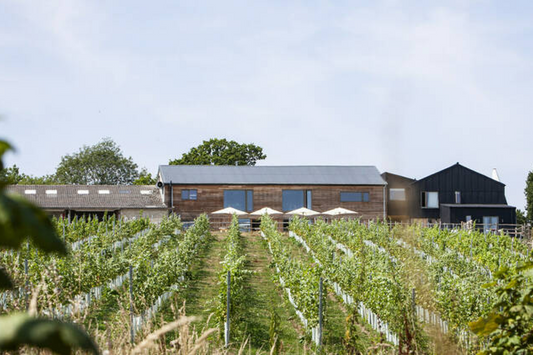Meet Zelma Long
Zelma Long is a pioneer in the world of oenology – the study of wine – and has won copious awards. Later this spring she will be honoured with a Lifetime Achievement Award by the Sonoma County Vintners. With a career spanning 53 years, Zelma is a winemaker, vineyard founder, global wine consultant, and public speaker. She is also a much-admired mentor, especially for women who want to succeed in an industry traditionally dominated by men.
On International Women’s Day, we are shining a light on one of the industry’s most admired pioneers. Read our interview with Zelma Long below.
You’ve had a long and successful career in the wine industry. How does it feel to be called a pioneer?
It feels good! And while I see that it’s correct, it’s also amazing because I didn't start out with the intention to be a pioneer. I just became involved in something really fascinating, that was also my family’s work. I think all pioneers become so by accident, and that’s how it was for me.
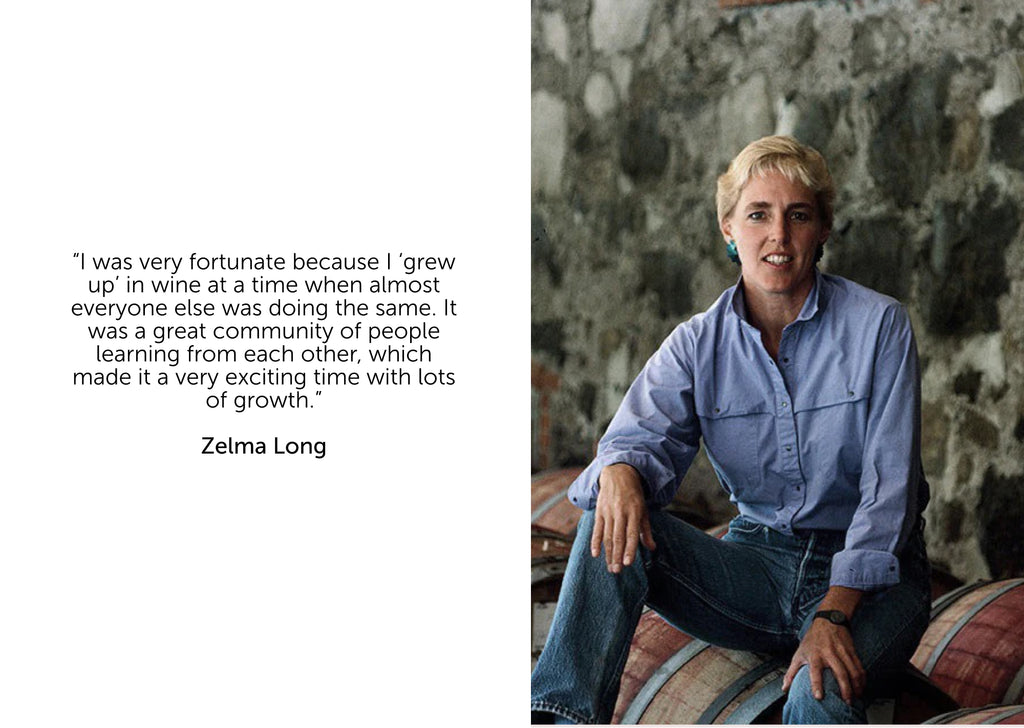
Photo: Simi Winery
What are the biggest changes you've seen in the wine industry over the last 50 years?
When I started in 1970, there were 19 wineries in Napa Valley and now there are over 500 – more wineries, more vineyards, more people involved in the industry, and more diverse grape varieties. There’s also been a constant development of vineyards and winemaking techniques, as well as more appreciation of the idea of growing wine in the vineyard as opposed to growing grapes.
I was very fortunate because I ‘grew up’ in wine at a time when almost everyone else was doing the same. There were a few experienced winemakers in Napa Valley – like my boss at Robert Mondavi, Mike Grgich – but in general, it was a great community of people learning from each other, which made it a very exciting time with lots of growth.
Why do you think the US wine industry has grown so much?
There has been a greater enthusiasm for wine amongst American consumers, which I think comes from a growing and increasing interest in food. The chef Julia Child wrote a French cookbook in the 1960s and it was like a bombshell in the United States in terms of changing how people ate. As people became more interested in travel and food, they also became more interested in wine.
You mention growing wine in the vineyard rather than grapes. Was there a lightbulb moment when this change in thinking occurred?
When I moved to Simi Winery, I started the North Coast Viticultural Research Group along with other winemakers and vineyard managers. As a group, we funded research projects at UC Davis that incorporated both viticulture and oenology. These were incredibly informative and underlined the link between grape growing and wine outcomes.
One project involved irrigation – where we irrigated at different times of the season, or not at all – and the results showed how the same grape in the same vineyard could produce very different wines, from something light, fresh, and fruity to a wine with almost overripe, intense flavour. And I looked at those and I thought, here's one single vineyard, and we've made just one different decision. And we have such different outcomes. It was a revelation. And that's when I became deeply interested in wine growing and what could be done in the vineyard to improve the wine. And these were fairly simple things – like protecting the grapes from sunburn and making sure they had the right amount of water at the right time.

Photo: Vilafonte
In general, we're better at understanding how external conditions affect the vineyard now. For example, we’ve developed systems so that vineyards are planted in rows to get the right amount of sunlight, and that’s complex because the geography is different for each site. We also need choose which type of rootstock to plant depending on the nature of the plant and soil type. For example, sauvignon blanc is a very vigorous grower. If your soil is rich and you use a vigorous rootstock, a large mass of leaves will grow. The grapes will then be slow to ripen, or will ripen unevenly, because they're in the shade. So you need a rootstock with less vigour. There are quite a few choices to make.
Is it typical for a winemaker to spend a lot of time in the vines?
Winemakers try to spend a lot of time in the vines. And certainly, at harvest time winemakers are busy in the vineyard selecting the right time for harvest. But the winemaker has a lot of responsibility in the winery too, so what really matters, is to have a good partnership with the person who's running the vineyard – and for that person to see wine as the outcome, not grapes. This means it’s equally important for a viticulturist to spend time in the winery.
What do you love about wine?
I love wine for its diversity of flavours and its ability to complement a meal and a social gathering. But I also love it because it reflects the soil and the climate. As grapes go through alcoholic fermentation, they preserve the flavour and aroma chemistry of the grapes. A wine speaks for its grapes which speak for their site. Making wine from a particular site is an amazing connection between our environment and a food product. It’s the antithesis of unnatural and a lesson in how impactful the environment is on what we eat.

Photo: Vilafonte
You’re clearly passionate about the wine growing environment. Do you have concerns about climate change?
My concerns about climate change are major, but in the context of growing grapes, they are hardy plants and grow widely across the planet. So, it will be a matter of adapting the grapes that grow successfully as the climate changes. For example, in my home region of Sonoma, winemakers are testing out Mediterranean varieties that grow in a warmer climate than we have here.
But it's not easy to adapt quickly. You might have a producing vineyard that's been doing very well. Changing the grapes grown in the vineyard ends the source of those profitable wines, while also requiring significant capital investment for replanting, and people will be growing grapes they're not familiar with, plus introducing new, possibly unfamiliar, wines to their consumers.
I do think people around the world will start evolving their vineyards – it just won't happen overnight.
Is there anything consumers can do to help with these changes?
Being willing to explore new wines from their favourite wineries, and being open to trying new wines more generally. My husband and I have been in the wine business for 50 years but on a recent trip to Puglia in southern Italy, we came across grape varieties we’d not heard of – like Negroamaro, a lovely red variety that makes a beautiful coloured rose and a nice red wine too. And Verdeca, a crisp dry white.
You’ve spent most of your winemaking career in California but started a winery in South Africa. How did that come about?
In the late 80s, I entertained a group of winemakers from South Africa to explore what was happening in California, because due to apartheid, South Africa had been cut off from the rest of the world. A couple of years later, one of the group invited me to South Africa to talk about our wine-making procedures, and visit a few vineyards. The Cape of South Africa is very influenced by the ocean – much of the wine country is within 20 miles of it – and we were impressed by the wine-growing conditions there, the temperatures, the ocean exposure, and the soils were amazing.
Over the next few years, I returned several times and developed some solid and consistent links. In 1997, three years after Nelson Mandela became president, we were approached by a winery owner who proposed a joint venture to plant and develop a vineyard on 100 acres of his land. In terms of our careers, the timing was ideal, so we decided to go for it.

Photo: Vilafonte
Today is International Women’s Day. How do you mentor and support the next generation of women in the industry?
I'm proud that I've hired and supported a lot of women in winemaking during my career. As an example, Dawnine Dyer worked for me at Mondavi before moving to Domaine Chandon – where she became their principal winemaker. Another example is a biochemist I met from Chicago. I gave her a tour of Simi and she went on to study oenology and viticulture at UC Davis, like me. She then developed her own vineyard in central California and enjoyed a very successful life in wine.
I think mentoring means encouraging people to follow their vision, but when people have a dream to be involved with wine – both women and men – I want to do what I can to facilitate their journey. But there are many different ways to participate in the wine industry. It can be in the vineyard or winery, but it can also be in marketing or finance. Winemaking is a challenging industry – you're at the mercy of Mother Nature on one side and the market on the other – so just helping people succeed is mentoring. And it’s often as simple as a small suggestion, a word of encouragement, or just someone to talk to.
And we couldn’t let you go without asking for some wine recommendations
Well, I've been in the business for a long time, so I've developed a clear set of preferences. I enjoy wines with a good deal of flavour intensity, and a great harmony between the components of alcohol, acids, tannin, and colour. That said, I could try wines endlessly because I'm always curious. Diversity with quality is my mantra.
The one area that I particularly love the wines from is the Barolo region in Italy – a small area with a tremendous amount of history. The grape grown there is Nebbiolo, and it makes a very lively, pretty, and complex wine. There’s also very good food in Barolo, and I always encourage people to taste the food from a newly discovered wine region to find out how it interacts with the wine being produced.
I'm in the process of going through the wine we’ve accumulated over the years, and I do encourage others not to be afraid of old wines if they’re stored in cool enough temperatures – less than 18oC or 65oF. I've even tasted some wonderful Sauvignon Blancs from the 1990s lately – much older than you might think they would go. I didn’t intend to keep them this long, but these older wines were a little softer, richer, and more mellowed and integrated than an intense distinctive young Sauvignon Blanc. You would still never guess how old they are.
Thank you Zelma for sharing your inspiring story, and Happy International Women’s Day.
Zelma Long
Zelma was born in The Dalles, Oregon, and gained a General Science degree with a nutrition major from Oregon State University in 1965. Moving to California, Zelma pursued a master’s degree in oenology and viticulture at the University of California, Davis and then joined Robert Mondavi Winery in 1970 as an oenologist – becoming their Chief Enologist just three years later.
In 1979 Zelma moved to Simi Winery as Vice President – with its own history of female trailblazing in winemaking through Isabelle Simi – and became CEO and President ten years later. In 1997 Zelma moved to Chandon Estates while also co-founding Vilafonte Wines – a new wine estate in South Africa. In 2000, Zelma became an independent wine consultant and now works with clients across the wine-producing world.
Zelma founded the American Vineyard Foundation – a not for profit organisation that unifies the grape and wine industries through collaborative research. She also founded American Viticultural and Enology Research Network (AVERN) and chaired the organisation from 1996 to 1998.
Zelma’s outstanding success as a winemaker was truly sealed when Vilafonte was named Wine Producer of the Year at the International Wine and Spirits Competition Trophy – beating 7,000 other entrants. Zelma’s many other awards include James Beard Wine & Spirits Professional of the Year 1997; American Society of Enology and Viticulture Merit Award 2009; Culinary Institute of America’s Vintner’s Hall of Fame 2010; and the Lifetime Achievement Award for Innovation in Winemaking, Wine Business Monthly 2019.
